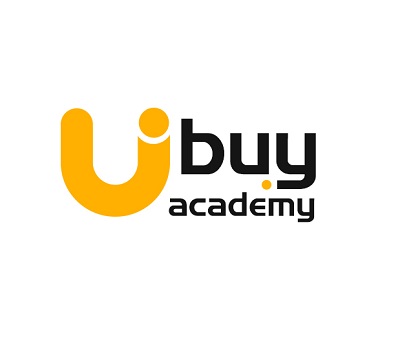A Guide to Publishing Your First Android App on the Play Store
 Ubuy Academy
Ubuy Academy
Creating your first app is always a bittersweet experience. On one hand, there’s the satisfaction of building something. On the other, you must release it everywhere. But you’ll be putting in the first step in a long journey as an app developer. Today, we will show you every step in publishing an app on the Google Play Store, from creating a developer account to optimising your metadata. It is beneficial for beginners and students entering the app development market. We also have tips for those seeking a suitable Android app development training institute in Jaipur and other cities.
Step 1: Create Your Developer Account
You must access the Google Play Console to publish your app on the Play Store. For this, you require a Developer account. This account lets you control your app and access various tools and insights.
1.1 Visit the Google Play Console Website
You must create a Google account first if you don’t have one. After you have created an account, head to the Google Play Console website.
1.2 Sign in Your Google Account
If you already have a Google account but aren’t logged in, ensure your linked email is active and showing. This email will work as your communication channel for everything related to your app.
1.3 Accept the Developer Distribution Agreement
Before you proceed, read and sign the Developer Distribution Agreement, which describes the terms and conditions for publishing your app. The legal contract helps create a safe and fair environment for everyone to thrive. You should also prepare a privacy policy and EULA for your users and Google with all your essential services and behaviours.
1.4 Make a One-Time Registration Payment
To access all the features of the Play Console, a $25 fee is required once. This small investment gives you several necessary functionalities. To complete the transaction, follow the on-screen instructions.
1.5 Examine the Play Console Dashboard
Once you’ve created your account, browse the dashboard. There are various components present, like statistics and development tools, that you can use to improve your app. Voila! Thanks to your developer account, you can now access the Google Play Console.
Step 2: Creating a New App
Once your developer account is active, let’s build a new app project.
2.1 Click on Create App
Click the Create Application button on the dashboard, which will take you to another window.
2.2 Enter the Basic Details
Now, you must provide basic information about your app, from its default language to its description. Your details should show the primary qualities of your app while attracting your potential customers. Another tip while writing these descriptions is to infuse your brand messaging to make them more sincere.
2.3 Create a Store Listing
The store listing is like a virtual storefront where the customers can learn what the app contains. You can show how your app interface looks through attractive pictures, graphics, and appealing symbols to draw your consumers.
2.4 Specify Your App Category and Type
Choose the right software type and category, whether gaming, lifestyle or others. This categorisation lets users quickly discover your software in the vast Play Store ecosystem.
2.5 Optimising for Tablets and Wearables
If possible, you should optimise your app for tablets and wearable devices by creating assets that work with larger displays and various form factors.
Step 3: Setting Up Your App’s Release
Figuring out how to launch your app is essential while developing and listing your application.
3.1 Select a Release Type
Decide if you want a closed alpha or beta testing before going public. Even with a small batch of users, testing can bring out potential deficiencies and bugs in your final product while fetching crucial insights.
3.2 Upload Your App Bundle or APK
Google prefers app bundles, and by uploading them, you allow Play Store to create optimised APKs for different device settings.
3.3 Define the Content Rating
Keeping your app unrated may lead to its removal. Avoid that by evaluating your app correctly and answering a questionnaire. The rating helps in user awareness and shows that you comply with the industry standards.
3.4 Configure App Signing
A critical security measure, app signing requires you to sign your app with a certificate while uploading digitally. This step protects both your app and your users.
3.5 Play Feature Delivery
With Play Feature Delivery, you don’t need to provide all your features simultaneously. You can distribute them on-demand to reduce your app’s initial download size and improve user experience. It also reduces a customer’s scepticism when downloading your app for the first time.
Step 4: Setting Pricing and Distribution
It’s time to determine your product's pricing strategy and distribution reach.
4.1 Determine Pricing and Distribution
First, decide whether you want your customers to download the app for free or pay a fee beforehand. The premium model option requires setting a value that fits the value you’re providing to your users. You should also be well aware of your customers' demographics to set a pricing model suitable for their economy and pricing.
4.2 Set Up In-App Offerings
If your software has any in-app purchases, determine the pricing model for each purchase. This approach reduces the scepticism of a user purchasing the app for the first time, as they can get a demo before being prompted to pay for more features.
4.3 Create a Monetisation Strategy
How do you plan to profit from your application besides the mentioned strategies? Do you want to show ads, offer subscriptions or place one-time purchases through the app journey? That’s for you to decide. First, understand your target audience and your app’s value proposition before finalising your approach.
4.4 Use Pricing Templates
Play Console also provides pricing templates to make your job easier. You can use it to control your prices across different countries and get traction accordingly.
Step 5: Change Your App’s Metadata
Optimising your metadata is necessary to increase your discoverability and attract new customers who engage with and download your app.
5.1 Create a Catchy Description
Your description should be catchy and concise to highlight the essence of your program. It should show the value you’re offering your customers and why they should download your app in the first place.
5.2 Select Relevant Keywords
Your choice of keywords should be careful and precise. The more specific keywords you employ, the higher your chances of reaching your target audience. Once you’ve selected the keywords, add them naturally to your metadata to boost your reach.
5.3 Create an Attractive Graphic Promo
What’s the spirit of your software? Create an image that embodies that spirit to represent your app in the best possible way. The graphic attracts and motivates your customers to try out your product.
5.4 Metadata A/B Testing
Perform A/B testing on different versions of your app metadata. This step helps you better understand what parts of your metadata appeal the most to your target audience. This step increases your conversion rates and overall visibility.
5.5 Localise Your Listing
To reach a wider audience, you should localise your app listing by giving translations for your application’s name, description, and other relevant information.
Step 6: Review and Publish
Once all the steps are over, review all the features and listed information to ensure everything is perfect and complies with the standard procedures.
6.1 Analyse the Content and Policies
Check your app content to ensure compliance with Google Play regulations. Your app must be devoid of any unlicensed copyrighted material while satisfying every relevant standard.
6.2. Test Your App
Try to test on as many devices as you can before releasing. Rigorous testing helps you discover and correct issues before your app is officially live. The smoother the user experience is, the higher ratings and positive reviews you’ll receive.
6.3. Create Release Tracks
Release tracks help in phased rollouts and control how fast your product reaches different user segments. They help you monitor and respond to user comments more systematically.
6.4 Acknowledge User Reviews and Ratings
User reviews and ratings are essential for any software. Respond to inputs immediately and use those to update your software regularly.
6.5 Utilise Developer Analytics
You can learn about your user behaviour, app performance, and other metrics using the analytics tools in the Play Console. These sights can help in shaping your future updates and improvements.
6.6 Keep a Track on Policy Changes
Google Play policies and your local digital regulations change regularly. Stay updated with those changes to ensure compliance and provide a positive experience to your customers.
6.7 Carry Out Beta Testing
Through beta testing, you can get input from various users to identify potential issues and improve the final app experience. Beta testing helps you get a taste of the public perception before the actual release.
Step 7: Post-Publication Strategies
Hooray! Your app is live and running on Google Play! But your journey is far from over because your post-publication steps go a long way in ensuring the success of your app.
7.1 Advertise Your App
Try to promote your app through as many channels as possible. Whether your website or social media platforms, talk about the app everywhere to increase the eyeballs on your app.
7.2 Communicate with Users
Proactively communicate with your users through the review section and social media platforms. Address the user concerns through replies and app updates and thank them for their feedback.
7.3 Monitoring Analytics
You should analyse your analytics regularly to understand your user behaviour and potential areas for improvement. This step keeps your app relevant to changing times and preferences by influencing future updates.
7.4 Provide Regular Updates
Through regular updates, you can remove bugs and present new features to improve user experience. When you continually improve user experience, they’re likelier to trust you.
7.5 Research Monetisation Options
Besides the options shown above, there are other monetisation opportunities available. You can try sponsorships, partnerships, brand collaborations, and more to maintain your product's long-term viability.
Choosing the Right Android App Development Training in Jaipur
Publishing your first Android app on the Google Play Store is a big step in a long journey ahead. Following the above steps, you can easily publish your app, from creating a developer account to researching monetisation options. It lays the right foundation for future projects and helps you understand each aspect of the current release. An app development career is exciting and filled with multiple opportunities. To turn your creativity into user-friendly and successful mobile applications, you must keep up with the industry trends and regularly upskill.
Your career will have several learning and progress opportunities, and you must make the right choices to steer ahead. The first such choice is one of choosing the right training academy. Remember some pointers when searching for the perfect Android app development institute in Jaipur or other cities. Your institution should have the latest software and updated policies to let you practice with suitable guidelines and tools. You should receive practical and customised guidance to ease your transition into the job market and give you the edge to excel. Getting a guaranteed placement after the course completion is always a bonus. Keep innovating, and best of luck for your journey!
Subscribe to my newsletter
Read articles from Ubuy Academy directly inside your inbox. Subscribe to the newsletter, and don't miss out.
Written by

Ubuy Academy
Ubuy Academy
Ubuy Academy is an IT training institute in Jaipur where students get to choose from a broad selection of IT courses that assist them in building a career in the ever-expanding IT industry. They train their candidates on various fronts owing to their highly trained professionals that frequently interact with foreign firms and clients for online marketing purposes. We are offering certified IT internship programs for freshers as well as working professionals. In addition to the thoughtfully designed courses, the mentors cover everything starting from front-end and back-end development to deployment and marketing in their IT training classes.